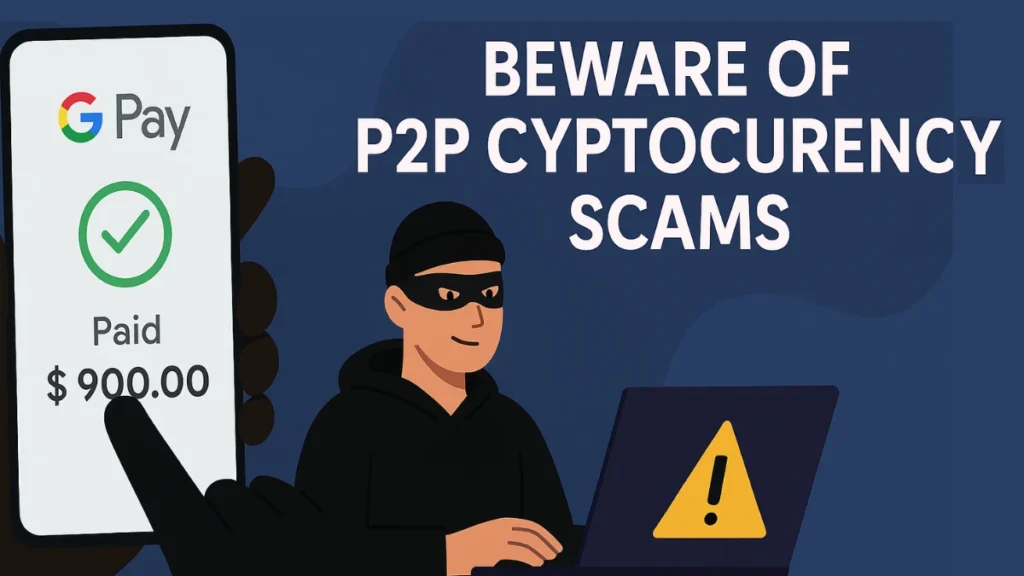When crypto platforms promise “secure P2P trading,” users expect their funds to be protected—especially when they follow all the rules. But for one trader, that trust was shattered after losing 900 USDT in a single trade, even after submitting full video proof, bank confirmation, and Google Pay history.
This isn’t just a one-off case. It’s a red flag for anyone using P2P platform and it might be time to reconsider how you trade USDT or any crypto peer-to-peer.

The Real Story: 900 USDT Lost in a P2P Trade
A crypto buyer tried to purchase 900 USDT through a P2P platform using Google Pay, a non-escrow method. After the payment was made, the seller simply stopped responding. The buyer submitted:
- Google Pay transaction video
- Bank confirmation
- Chat records
- And escalated the case nine times
However, the platform failed to act. Due to technical issues, the buyer couldn’t upload video evidence properly, and the system blamed them for not providing proof. Eventually, the platform cancelled the order and returned the crypto to the seller, resulting in a total loss of 900 USDT.
Escrow vs Non-Escrow in P2P Trading
This story highlights a major misunderstanding that puts many users at risk: not knowing the difference between escrow-based trades and non-escrow payments.
What is Escrow in P2P?
Escrow is a security feature used by P2P platforms. It temporarily locks the seller’s crypto during a trade. The process works like this:
- Buyer places a crypto order
- Platform locks the crypto in escrow
- Buyer pays the seller using a verified payment method
- Once the seller confirms receipt, crypto is released
If something goes wrong, the buyer can raise a dispute, and the platform will review evidence before releasing or reversing the crypto.
For a better understanding of safe P2P platforms, read: Binance P2P Scam Explained
What is Non-Escrow (Unsafe) P2P?
In non-escrow trades:
- Payment happens outside the platform
- Crypto is not locked, so there’s no protection
- Even if you provide proof, the platform may not verify external transactions
This typically happens when a seller says: “Cancel the order and send me money directly via Google Pay or PhonePe.”
If you follow through, you’ve left the safety net—and there’s no going back.
P2P Crypto Trading Risks and Key Lessons for Buyers
Whether you’re a new investor or a seasoned trader, here’s what this case teaches:
Avoid:
- Google Pay, UPI, or PhonePe without escrow backing
- Off-platform requests like “send here directly”
- Any seller demanding cancellation fees or advance payments
Do:
- Use platforms that offer true escrow protection
- Record screen and payment process as video evidence
- Read the platform’s P2P dispute policy before trading
- Store funds in secure wallets after trading
If you’re just starting out in crypto and unsure how to choose a safe platform: How to Invest in Cryptocurrency for Beginners
Can You Recover Your Crypto?
In some cases, yes—but you need to act quickly:
- Report the scam to the National Cybercrime Portal (India): https://cybercrime.gov.in
- Contact your bank with proof of fraud
- Raise a ticket and go public — platforms often respond faster on Twitter/X
- Share your case to help others avoid similar mistakes
If you’re facing refund delays on platforms like Bybit, check this: Bybit P2P Refund Process if Seller Didn’t Release Crypto
Why P2P Crypto Still Fails — Even With Escrow in Place
This story is not about blaming a single exchange. It’s a warning that even the most trusted P2P platforms can fail if you step outside their safety systems.
The problem isn’t just scammers—it’s weak upload systems, poor escalation response, and unclear timelines. Combine that with external payments like Google Pay, and even legitimate buyers end up powerless.
Also learn how crypto taxes apply to P2P trades: Crypto Tax Rules for P2P in India
Final Thoughts
Crypto freedom comes with responsibility. While P2P gives users more control, it also removes a layer of centralized protection. The only real protection you have is understanding how escrow works—and staying within it.
Related Guides from Fdaytalk
- Convert USDT to INR Legally in India
- How to Use Binance P2P Safely
- Best Bitcoin Mining Machines 2025
- Is Bitcoin Mining Legal in India?
- Avoiding Crypto Mining Taxes – USA & India
Disclaimer:
Cryptocurrency trading, including P2P transactions, involves financial risk. This article is intended for educational purposes only and does not constitute financial or legal advice. Readers are advised to do their own research and use caution when dealing with digital assets or third-party platforms. Always ensure transactions occur through secure and verified methods like escrow to minimize risk.

